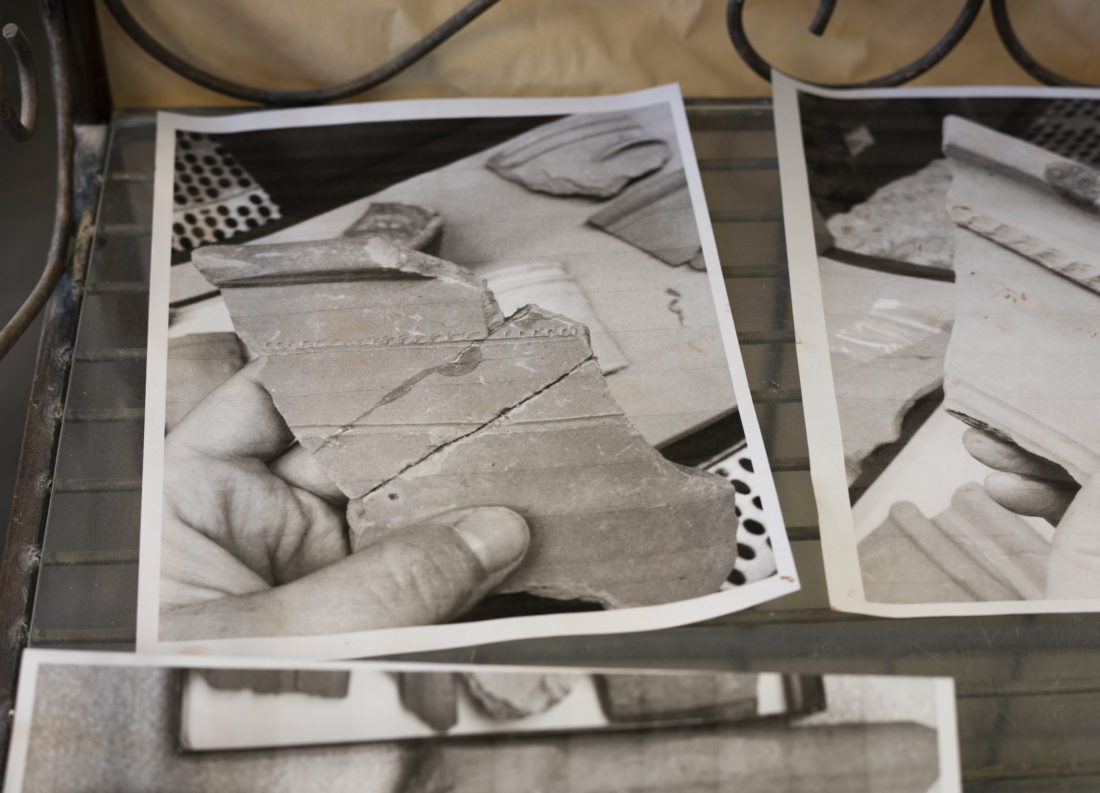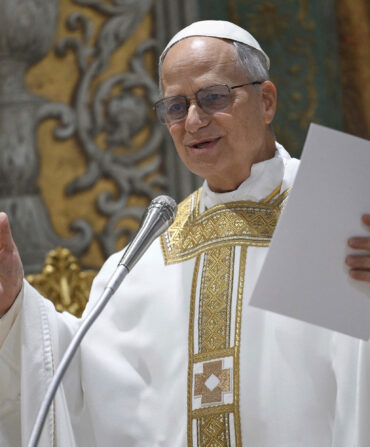Guy Wolff, the country’s foremost flower pot potter, is on his knees, wedging clay on a concrete floor at Cone 10 pottery studio in Charleston, South Carolina. He thumps the red hunk, rolls it aggressively. This would be too rough for biscuits, but it’s the right way to work clay. He carries the clay to the wheel and smacks it down. “I’ve never made this exact pot before,” he says, describing how every pot of the thousands he makes is a capsule of that moment. “How you breathe gives it life, and working the wheel is just a form of dance.”

Photo: Brennan Wesley
Guy Wolff at the wheel.
Wolff has earned the right to wax poetic about his craft. Since 1971, he has thrown and fired thousands of clay pots in his workshop in Bantam, Connecticut, and on trips around the world. But his renown exploded when Martha Stewart handed Oprah Winfrey one of his pots on live television in the 1990s. He’s now turned out countless classic red or white clay garden wares that are inspired by centuries-old Italian, French, and English designs. Now, he’s finding inspiration in the history of the Holy City. As part of this weekend’s Charleston Antiques Show at the Gaillard Center (March 15–17), Historic Charleston Foundation will sell the pots he makes as a fundraiser for their preservation efforts.
First, the foundation combed through its vast collection of broken pottery from digs and excavations throughout the Lowcountry. “Thousands of sherds of flower pots have been in storage at the Charleston Museum,” says Lauren Northup, director of museums at HCF. “We know beyond the shadow of a doubt that these flower pots were used on-site at the Nathaniel Russell House and Drayton Hall.” She sent photographs of the excavated bits—their lipped rims, delicate indentations and designs—to Wolff, who shaped four hundred pounds of clay into pots inspired by the historic planters.

Photo: Brennan Wesley
Photos of the excavated pottery pieces.
Wolff spins the wheel slowly, presses the clay down, and builds it back up. He’s done this so many times, throwing the clay, forming the funnel, shaping the simple lip at the top of the vessel, and he easily flows into conversation. “I’m not trying to replicate the historic pots, exactly,” he says. “I’m referencing their elegance and design, creating something related that wouldn’t seem out of place in an eighteenth or nineteenth century garden in Charleston.”
He pulls out a hand tool, which is a peanut butter cap attached to a handle, and rolls it under the rim of the pot to make an elegant staccato design. The very last touch is a stamp, one for Drayton Hall pots that mark those as inspired by that estate and one for Historic Chareston, SC.
Whoops. Yes, the stamp says Chareston.

Brennan Wesley
The potter puts a hand to his forehead. Leans toward his row of pots. He’s done dozens of these already. He groans, then rolls his eyes to the ceiling and laughs. It’s just the kind of unique detail that might make these pots collector’s items someday, so he continues on.
After Historic Charleston Foundation sells all thirty rare “Chareston” pots at the antiques show, the foundation hopes to bring Wolff back to create more, perhaps with the stamp spelling corrected. Drayton Hall will begin selling the pots inspired by their collections at the Guy Wolff for Drayton Hall Garden Launch Party on Saturday, March 23.








